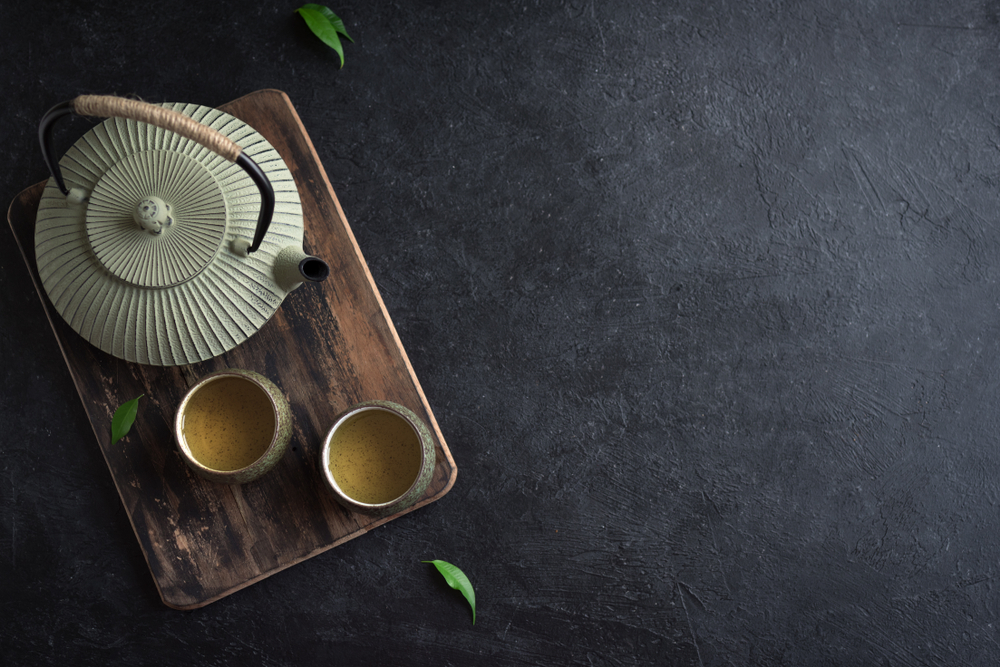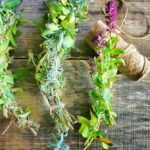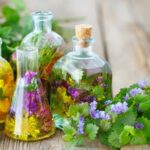Herbs have been used for millennia to soothe the mind or heal the body, and many traditional remedies remain popular today. They’re available in a variety of ready-to-use forms, such as tinctures and pills, but one of the easiest ways to enjoy the healing benefits of herbs is in herbal teas. A bonus is that you don’t have to use store-bought herbs; you can grow many kinds of medicinal plants in your own garden, and either use them freshly picked or air-dry them for storage. Here is a basic recipe for herbal tea along with details of five of the easiest herbs to grow yourself.

Basic herbal tea recipe
Herbal tea is made in a similar way to traditional tea by adding hot water to your herb of choice. Pour six fl oz of boiling water over two heaped teaspoons of washed, finely chopped fresh leaves or half that amount of dry herbs. Where flowers are used, such as in chamomile tea, two tablespoons of fresh flowerheads or three teaspoons of fresh petals should be adequate. Again, use around half that amount of dried material. Cover and steep the mixture for 5 to 10 minutes then strain and drink. Add a little honey to your tea if you prefer a sweeter drink.
Roman Chamomile (Chamaemelumnobile)
Roman chamomile is an easy-to-grow, self-seeding hardy perennial that likes well-drained soil and a sunny location; however, it will adapt to less-than-perfect conditions. It’s easy to grow from seed and provides excellent ground cover. Use the pretty daisy-like blooms for making tea. Simply pinch them off when they’re fully open. Chamomile tea can soothe indigestion or help you relax and get a good night’s sleep. It also makes a great hair rinse for fair hair.
Sage (Salvia officinalis)
Sage is a hardy evergreen perennial herb with culinary as well as medicinal uses. Grow it from seed in moist, but well-drained soil in full sun or partial shade, and harvest leaves at their best, just before the flowers bloom. Sage has a reputation for easing the symptoms of menopause, such as mood swings and hot flashes. Alternatively, add a little cider vinegar to sage tea to use as a gargle to ease a sore throat.
Peppermint (Mentha x piperita)
Peppermint is a hardy perennial that will grow in any type of soil so long as it’s moist. It also likes full sun or partial shade. Buy this herb as a young plant or grow it from seed, but beware as it will spread prolifically if you’re not careful. Harvest leaves before the flowers open. Drink peppermint tea to relieve indigestion, flatulence, or nausea.
Rosemary (Rosmarinus officinalis)
Rosemary is a woody evergreen shrub that thrives in well-drained soil in full sun. You can grow it from seed, but it’s easier to buy young plants or cultivate from cuttings. It has a strong resinous flavor, so use half of the recommended amount of plant material to make your first batch of tea and adjust to taste after that. Rosemary tea is good for colds, headaches, and fatigue.
Marigold (Calendula officinalis)
This is a hardy annual producing bright orange edible flowers that can be used to liven up salads and color cakes and rice. Grow marigold from seed in the free-draining soil or in containers and window boxes. It likes full sun or partial shade. Drink tea made with marigold flowers to calm inflammatory bowel problems or as a mouthwash for mouth ulcers.
Herbal teas are a simple, gentle way to take traditional remedies for common complaints. However, if you’re pregnant or taking prescription medicines, it’s best to seek advice from your doctor, pharmacist, or herbalist before using medicinal herbs. Herbals teas may not be suitable for babies or young children.
To learn more about growing herbs and using them as part of your nutrition, check out some good herbal resource books at Llewellyn publications. Also, read up on more edible home remedies you might enjoy here on our blog!







